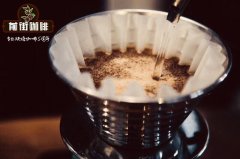How many varieties are there in Arabica beans? is it Arabica coffee gene bank?

Professional coffee knowledge exchange more coffee bean information please follow the coffee workshop (Wechat official account cafe_style)
Qianjie-introduction of Arabica coffee beans
The Federal Democratic Republic of Ethiopia (English: The Federal Democratic Republic of Ethiopia), abbreviated as "Ethiopia" or "Ethiopia", is a country located in northeast Africa. It is bordered by Djibouti and Somalia to the east, Sudan and South Sudan to the west, Kenya to the south and Eritrea to the north. The plateau accounts for 2% of the total area of the country, with an average elevation of nearly 3000 meters. It is known as the "roof of Africa", and the capital is Addis Ababa.
Ethiopia is a member of the African Union and one of the least developed countries in the world, with an economy dominated by agriculture and animal husbandry and a weak industrial base. The headquarters of the African Union is located in its capital.
Ethiopia is the largest producer of Arabica in Africa. More than 2,000 varieties under Arabica are derived from Ethiopia's oldest variety of Tibica, which was transplanted to Central and South America or Asia. Ethiopia is a genetic treasure trove of Arabica, and it is estimated that there are at least 2000 varieties, while less than 5% of the varieties belonging to Arabica in Xuancheng, the Ethiopian authorities, have been deeply studied and confirmed in their morphology and habits.
First, the unique grading system and bean phase
Ethiopian coffee beans are divided into five grades, the first stage (Grade 1) and the second stage (Grade 2) reserved for water washing. Grade1 represents 3 defective beans per 300g raw beans, and Grade 2 represents 4 defective beans per 300g raw beans. The quality of sun-cured beans was Grade 3, Grade 4 and Grade 5 in turn. In recent years, some farms have launched Grade 1 sun-dried beans, which can be regarded as the best.
The mode of production and flavor of Yejashefi coffee are so outstanding that Ethiopian coffee farmers compete to be proud of the flavor of their own coffee, making it the most famous coffee producing area in Africa. The so-called "Yega Chuefei" refers to the strong aroma of jasmine, as well as the sweet aroma of peaches, almonds and tea, that is, "flowers bloom at the entrance of coffee". Just like a flower touches the comfort of taste buds and olfactory cells in the nasal cavity.
Arabica has two derived species, Ironka and bourbon, as well as its derived varieties, experimental varieties, hybrids and so on. Often heard are Kaddura, Kaduai, Katim and other varieties, numerous.
Knowledge: high-altitude planting areas are all 4000 to 6000 feet above sea level. The planting temperature needs a temperature climate between 15 degrees and 25 degrees, and the annual rainfall must reach 1500 mm to 2000 mm. At the same time, the rainfall time should be in line with the flowering cycle of coffee trees.
In short: Qianjie is a coffee research hall, happy to share the knowledge about coffee with you, we share unreservedly just to make more friends fall in love with coffee, and there will be three low-discount coffee activities every month. The reason is that Qianjie wants to make more friends drink the best coffee at the lowest price, which has been Qianjie's tenet for 6 years!
END
Important Notice :
前街咖啡 FrontStreet Coffee has moved to new addredd:
FrontStreet Coffee Address: 315,Donghua East Road,GuangZhou
Tel:020 38364473
- Prev

What's the taste of Arabica beans? Arabica or manning? I want all of them.
Professional coffee knowledge exchange more coffee bean information please follow the coffee workshop (Wechat official account cafe_style) front street-Arabica coffee varieties introduction Arabica coffee around the world, Arabica coffee belongs to the small fruit Arabica coffee is not native, mostly cultivated. As for how Arabica coffee spread to all parts of the world, it has not been discovered.
- Next

What's good about Arabica coffee beans? is Rose Summer Arabica? know its past life and this life.
Professional coffee knowledge exchange more coffee bean information please follow the coffee workshop (Wechat official account cafe_style) front street-rose summer coffee bean variety introduction first of all, rose summer (Geisha) is a variety of coffee beans. The earliest species of roses were discovered in the rose forests of Ethiopia in 1931, then sent to the Coffee Institute in Kenya and introduced to Ukraine in 1936.
Related
- Beginners will see the "Coffee pull flower" guide!
- What is the difference between ice blog purified milk and ordinary milk coffee?
- Why is the Philippines the largest producer of crops in Liberia?
- For coffee extraction, should the fine powder be retained?
- How does extracted espresso fill pressed powder? How much strength does it take to press the powder?
- How to make jasmine cold extract coffee? Is the jasmine + latte good?
- Will this little toy really make the coffee taste better? How does Lily Drip affect coffee extraction?
- Will the action of slapping the filter cup also affect coffee extraction?
- What's the difference between powder-to-water ratio and powder-to-liquid ratio?
- What is the Ethiopian local species? What does it have to do with Heirloom native species?

